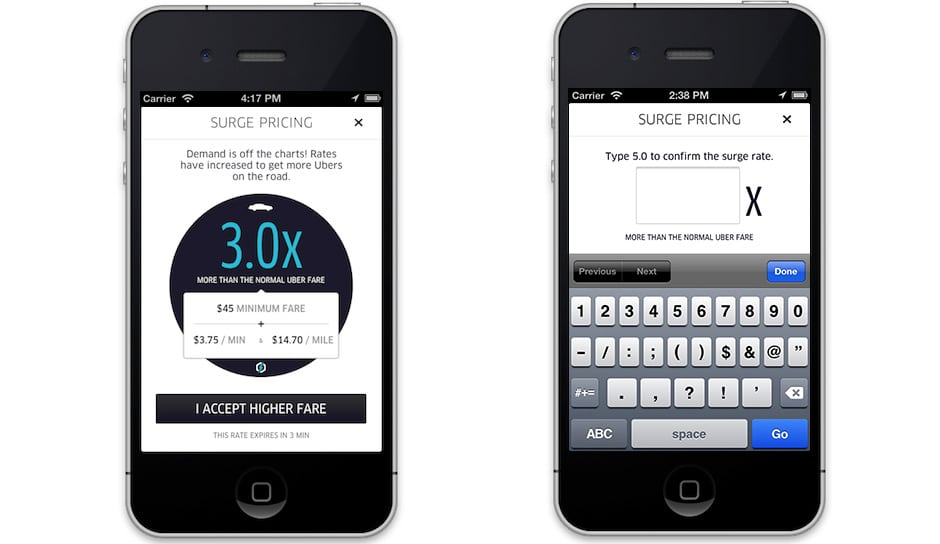Uber Moves to Patent the Surge Pricing Its Customers Hate

Skift Take
Can Uber patent it's most valuable asset: A stubborn refusal to listing to critics, regulators, or consumers?
When Uber Technologies Inc. jacked up prices in Sydney this week to meet the demand of people fleeing a hostage crisis, critics accused the ride-sharing service of price gouging.
The company, though, makes no apologies for what it calls “surge pricing” -- and in fact is seeking to patent it.
Uber applied for a U.S. patent last year for “dynamically adjusting prices for service” using mobile devices. The system measures supply (Uber drivers) and demand (passengers hailing rides with smartphones), and prices fares accordingly [patent application embedded below].
It’s one of at least 13 U.S. patent applications filed by Uber or its founders to give it an edge over potential rivals ahead of a potential initial public offering. So far, Uber hasn’t had any luck. Ten applications were initially rejected by the U.S. Patent and Trademark Office for “obviousness” or for covering something not eligible for protection.
“Cabs have been around for centuries,” said John Martin, chief executive officer of Innography Inc., an Austin, Texas- based maker of software to analyze patent portfolios. “What is new, and what they’re trying to capture around some of their filings, is the arrangement between the rider and the car.”
Uber started in San Francisco in 2009 and has expanded to more than 250 cities in 53 countries to become the largest car- booking service that passengers request via a mobile-phone

